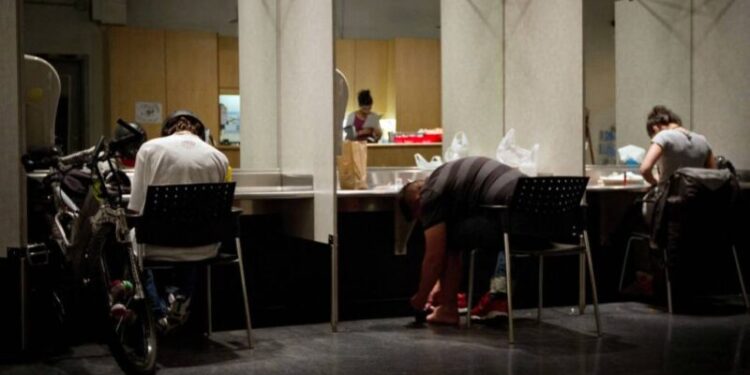McCoy, who is now vice president of policy and public affairs at HealthRIGHT 360, said he spent nearly two decades unhoused and high in San Francisco’s Tenderloin neighborhood. He said he usually injected drugs inside public restrooms at the library, and likely caught HIV from a dirty needle.
“I weighed 110 pounds,” said McCoy. “I had psoriasis all over my body. I hated my life so much and I wanted to die.”
Known at the time as a “frequent flier” in the city’s jails and public hospitals, McCoy said he now wishes he had known where to seek help.
“If these sites had been available to me, it wouldn’t have taken until I was 32 for me to finally decide that treatment was right for me,” he said. “I’m certain it would have happened much sooner.”
He added, “Just knowing that there’s someone there that’s supportive and treating me with dignity and kindness would have gone such a long way.”
More than 2 1/2 times as many San Franciscans died of accidental drug overdoses in 2020 — a record of roughly 700 people — than died from COVID-19 that year, San Francisco Mayor London Breed said earlier. She cited spiking drug overdose rates in declaring an emergency in the Tenderloin neighborhood in December.
Nationwide, drug overdose deaths increased 28.5% to more than 100,000 during the 12-month period ending in April 2021 over the same period a year earlier, according to the U.S. Centers for Disease Control and Prevention, including about 10,000 Californians.
Stiff opposition
SB 57 faced significant pushback from Republican state leaders and agencies like the National Narcotic Officers’ Associations’ Coalition and the Association of Deputy District Attorneys, who both argued the sites would not provide an adequate path to treatment.
“We might save one [life] here and there with the resources,” said state Sen. Rosilicie Ochoa Bogh, R-Yucaipa, who voted against the measure. “But then we have another slew of people coming off the fence and becoming addicted to these drugs.”
She said sanctioned drug use sends the message that substances like heroin and cocaine are safe.
“The Legislature must work in tandem with law enforcement to get illicit drugs off our streets and hold drug dealers accountable for the lives they ruin,” said state Senate Minority Leader Scott Wilk, a Santa Clarita Republican, in a statement. “SB 57 doesn’t do that and could ultimately result in innocent people becoming victims to the crimes and hazards surrounding drug abuse.”
 Gary McCoy sits outside City Hall in San Francisco on Aug. 1, 2021, during a hunger strike calling for San Francisco to put funds toward the overdose crisis and implement safe consumption services. (Beth LaBerge/KQED)
Gary McCoy sits outside City Hall in San Francisco on Aug. 1, 2021, during a hunger strike calling for San Francisco to put funds toward the overdose crisis and implement safe consumption services. (Beth LaBerge/KQED)
Feds considering safe injection sites
The first two publicly recognized overdose prevention sites in the United States opened in New York City in December and have been credited with intervening in more than 150 overdoses. People can go there to inject or snort illegal drugs under the supervision of trained staff who have “crash carts” stocked with naloxone and other life-saving tools. The goal is also to inspire people to seek treatment and to connect them to primary care and social services.
Rhode Island also recently approved the pilot of similar programs.




















